
It takes time, energy and money to whiten teeth. And by investing all of that, you want the results to be the best they can be, and last as long as possible. When my patients and I discuss whitening treatments, we go over more than just the ways to whiten but how they can get the best results! And what you consume during and after treatment plays a large role in how white and bright the teeth can become!
All foods and drinks that have colour should be avoided, during and up to 48 hours after a whitening treatment. Teeth are dehydrated when whitened, and the pigments from what we consume can be absorbed into the teeth staining them. Also, toothpaste and mouthwash that have pigment should be avoided.
The success of whitening treatment relies heavily on what comes in contact with the teeth during and after the treatment.
A great rule of thumb that we tell our patients in the dental office I work in is, imagine a wearing a white shirt, and anything that is spilled or dropped on it, would it stain? If the answer to that question is yes, it is best to avoid it.
Foods and Drinks to avoid
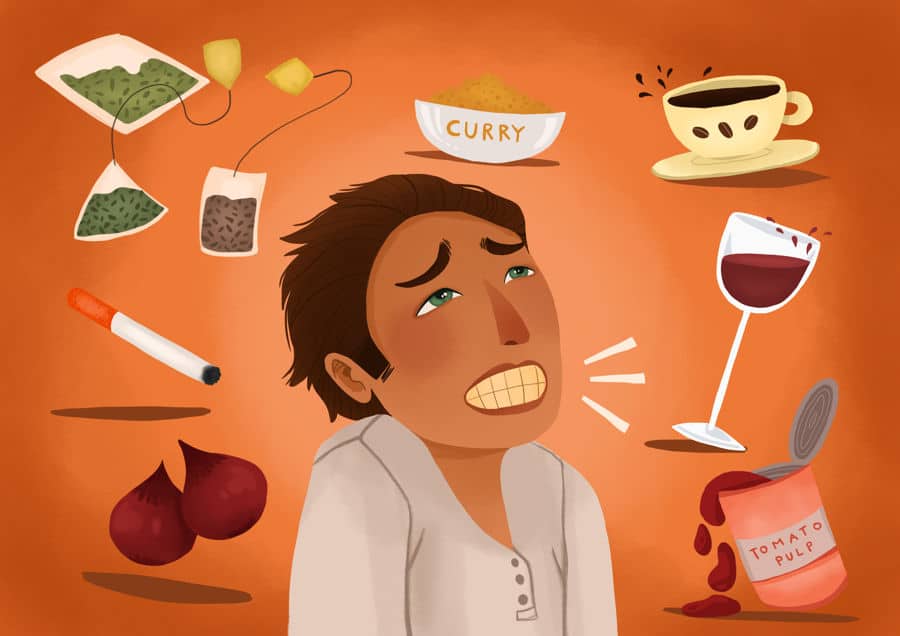
Rich and dark coloured foods and drinks
- Tea
- Coffee ( I know tea and coffee may be tough to avoid, but if you do need to have a caffeine fix, drink it through a straw, drink it AS QUICKLY as you can, and rinse your mouth out with water right after)
- Red wine
- Soft drinks (pop, soda)
- Fruit smoothies or juices, including vegetable juices (carrot and tomato)
- Soy sauce
- Curry
- Red meat
- Spinach
- Chocolate
- Red pasta sauce
- Fruit especially blueberries and strawberries (excluding bananas, pears, and apples)
- Eggs (with the yolk)
- Popsicles (ice-lollies)
- Candy
- Coloured gum (chewing gum)
Acidic foods and drinks
- White wine (read below this list for explanation)
- Fruit juice
- Vitamin Water
- Sports drinks
- Vinegar
- Alcohol
- LEMON WATER (please do not drink this at any time, as it can cause irreversible damage to the teeth such as acid wear, and increased stain)
Due to its level of acidity, white wine should be avoided. It can break down the tooth surface, making it more susceptible to cavities, stain, and wear.
Oral hygiene products to avoid
Mouthwash
Most mouthwashes have pigment in them to resemble their associated flavour. In some mouthwashes, there is an ingredient called cetylpyridinium chloride, which can cause tooth staining in a small percentage of users. Even when they have not been whitening their teeth, it can still stain teeth.
Toothpaste
Some kinds of toothpaste can be blue, green, and red either in a gel or paste consistency.
Another ingredient in toothpaste that can stain is stannous fluoride. In most kinds of toothpaste, sodium fluoride is used, which is tooth colour. But stannous fluoride contains tin, which can cause staining.
The reason why stannous fluoride is used in toothpaste is that it is more effective for preventing cavities and reducing sensitivity. Toothpaste that has it in the formula either use an abrasive, or an agent that binds with the tin before it gets absorbed into the tooth.
Sensodyne has the ingredient that binds with the tin to prevent stain, which is a much better way of removing it than an abrasive. So if you’re looking at the ingredients on the toothpaste when you are whitening your teeth, avoid stannous fluoride (unless using Sensodyne).
Anything else to avoid?
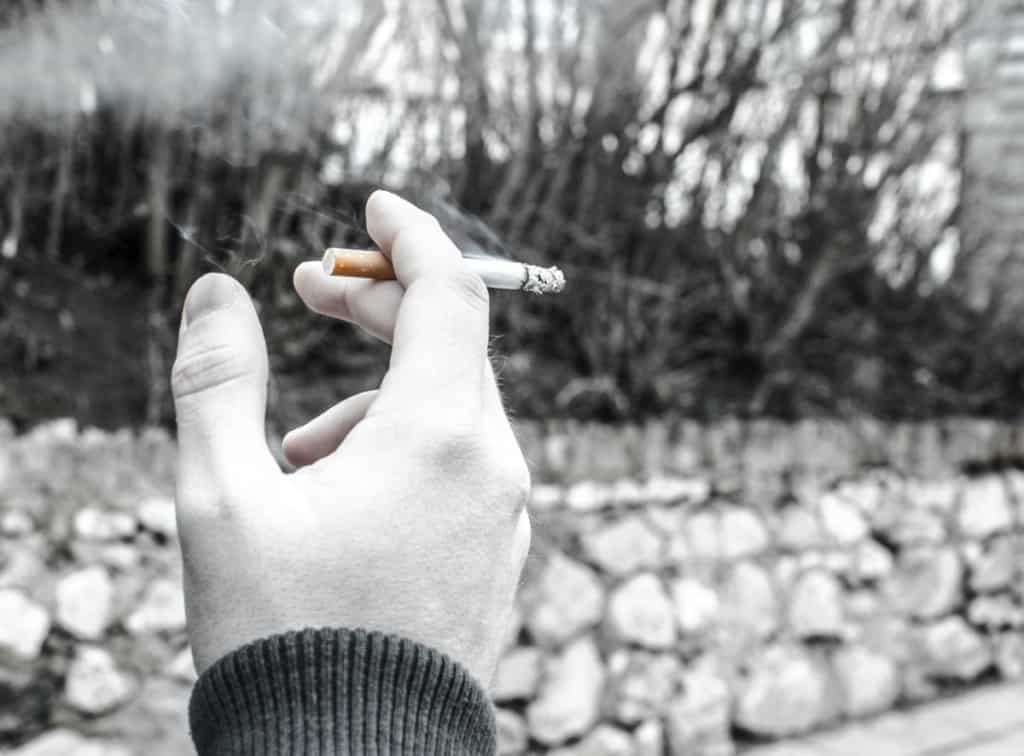
Smoking should be avoided during and after whitening for the best results. The stain that comes from tobacco use is extremely tenacious.
Not only does smoking cigarettes cause stains, but all tobacco products can stain your teeth. These include chewing tobacco, cigars and even hookah.
Does the type of teeth whitening matter?
Yes it does. The best whitening treatment you can get is in the dental office.
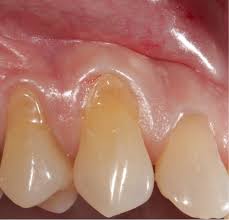
You want to stay away from whitening toothpaste (most of them are just abrasive and will remove a layer of your teeth surface that you can’t get back), rinses, pens, and gum. To learn more about whitening pens, you can find more info here .
.
It is really important to have a dental professional oversee or discuss whitening treatment with you. Read more about why in the post linked below.
Related post: Teeth Whitening: Why It’s Worth Having Done at the Dentist
What toothpaste should be used before, during and after whitening?
For at least 2 weeks before whitening the teeth, a toothpaste that contains potassium nitrate should be used. Potassium nitrate helps to desensitize the nerves of the teeth, reducing sensitivity caused by the whitening product.
For most people, having their teeth whitened can be a painful experience. When the teeth are whitened, the nerves of the teeth get hypersensitive. The nerve of the tooth becomes much more sensitive to things such as;
- Touch
- Cold/hot temperatures
- Sweets
- Acidic food and drink
Instructions for toothpaste use:
It is extremely important to follow these instructions so the toothpaste can be as effective and make the process as pain-free as possible.
- You will want to floss your teeth first, as this will clear away and disrupt the bacteria and food debris between the teeth and underneath the gums.
- Brush with a toothpaste that contains potassium nitrate. You only need about a pea-sized amount.
- Brush your teeth for 2 minutes.
4. DO NOT RINSE YOUR MOUTH OUT
Sorry to be so forward with the instructions but seriously speaking, if you rinse your mouth out after brushing, you are going to rinse away most of the active ingredient (potassium nitrate and fluoride), and it will not be as effective.
Learn more about sensitivity toothpaste in this related post; What Sensitivity Toothpaste Works the Best?
Great foods to eat during and after whitening
Anything white. The white diet will help maintain white teeth during this period. Examples of things that can be consumed are;
- Potatoes (not sweet potatoes)
- Cauliflower
- Egg whites
- White fish
- Rice
- Yogurt (avoid fruit yogurt)
- Milk
- White cheese (avoid orange cheddar or anything dyed)
- Cottage cheese
- Apples
- Bananas
- Pears
- Pasta and white pasta sauce
- Chicken
- White Onions
- White bread
- White cereals such as Rice Krispies
You can have some white juices or drinks that contain white alcohol, but they should be limited as they are often very acidic and can further break down the tooth surface. Try and wait at least 24-48 hours.
Why the teeth are more prone to stain during and for 48 hours after whitening
When teeth are whitening, they are dehydrated. This pulls the water out of the tooth, so the peroxide has somewhere to enter to remove the stain inside the tooth.
The saliva and fluoride in the toothpaste will help to remineralize the tooth after the whitening solution is removed from the teeth.
Maintaining your white smile
The most effective way to maintain a white and bright smile is to have great oral hygiene habits. Flossing and brushing are so important to maintaining a healthy and white smile.
The bacteria that live in our mouths never stop reproducing and feeding on the food that we eat.
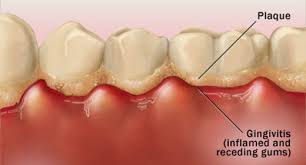
The bacteria mostly form around the gumline of the teeth and in between the teeth.
When left on the teeth the bacteria can absorb pigment and eventually calcifies onto the tooth surface (this is called calculus or tartar).
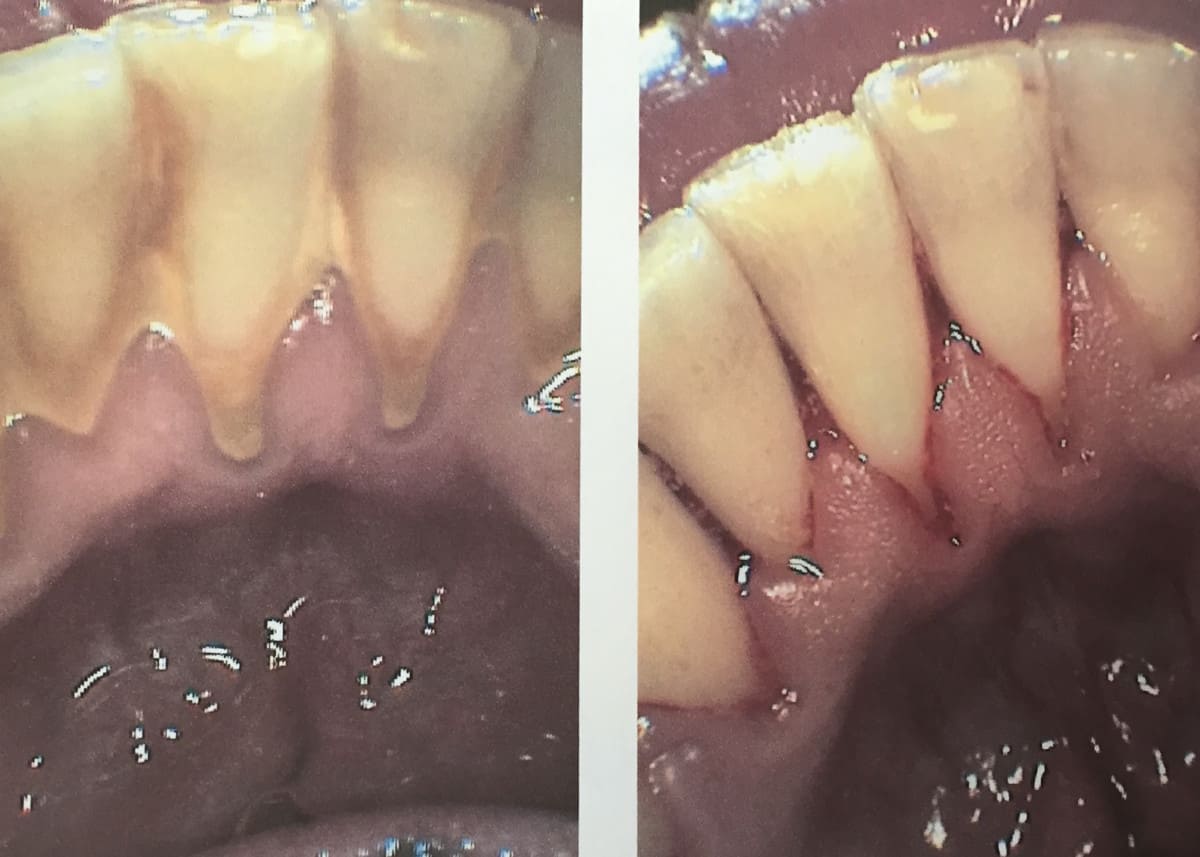
The calculus that is on the teeth is more yellow and can absorb pigment from the blood that comes from the inflamed gum tissue.
By regularly flossing and brushing, the amount of calculus that forms on the teeth is reduced, keeping the teeth looking white.
Maintain regular dental and cleaning appointments and check ups.
Having dental appointments regularly is imperative to maintain good oral health. When the plaque and calculus are cleaned away from the teeth, the gums and surrounding tissues become healthier.
Also, when the teeth are cleaned, the surface stain is removed, allowing the white teeth to be more exposed, contributing to a whiter and brighter smile.
Related post: How Dental Hygienists Clean Your Teeth
Holly 🙂

